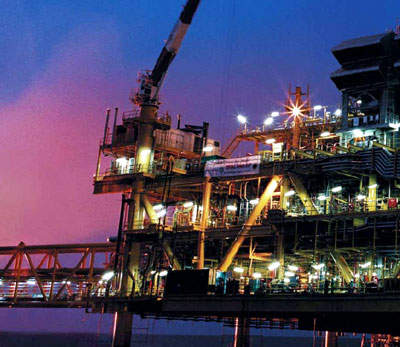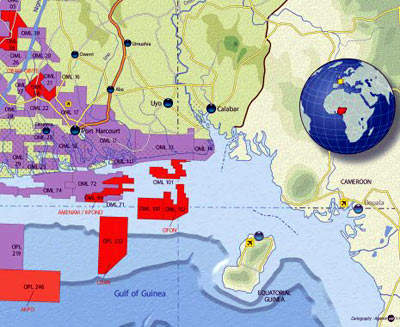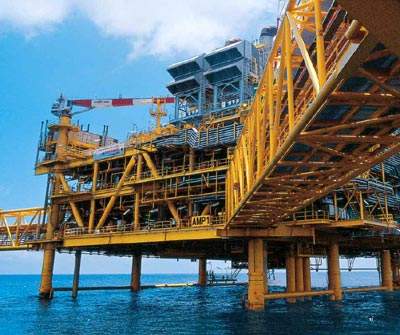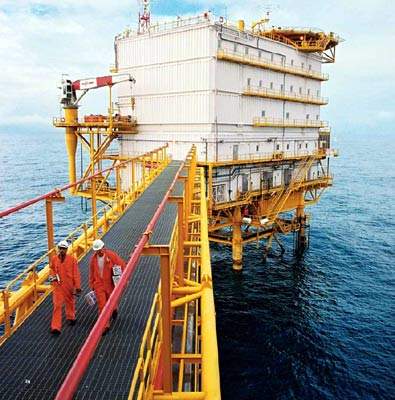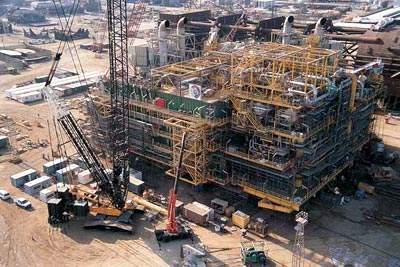The Amenam-Kpono field, located about 30km off the eastern part of the Niger Delta, is one of the largest conventional offshore developments in West Africa. It is operated by Elf Petroleum Nigeria in partnership with ExxonMobil and the state-owned Nigerian National Petroleum Corporation (NNPC).
Located at a water depth of 40m, the field was discovered in 1990 and developed in two phases. All the associated gas was reinjected into the reservoirs to optimise the oil recovery rate, during phase one between 2003 and 2007. The field achieved the peak production of 125,000 barrels of oil per day (bpd) within a year of its commissioning. The strategy was implemented due to Nigeria’s ban on gas flaring in 2008, eliminating estimated annual emissions of 15 million metric tons of carbon dioxide equivalent.
Phase two, which started in 2007, was dedicated to recovering associated gas from Amenam-Kpono and other fields. First gas from the second phase of the Amenam-Kpono oil and gas export project was delivered to the Nigeria LNG facility in Bonny Island in January 2007.
Ten million cubic meters of previously re-injected gas was exported to the Bonny liquefaction plant, which was replaced with the injection of 300,000 barrels of water a day. It, therefore, required the use of additional offshore structures, as well as the use of water injection, partially replacing the gas injection that was used.
Cumulative production over 30 years will amount to 588 million barrels of oil.
Amenam-Kpono geology
The Amenam-Kpono field was formed from sand deposited in the Niger Delta during the Miocene epoch. It consists of six hydrocarbon-bearing reservoirs ranging from 3,400m to 4,700m below the seabed.
The four main reservoirs, R4, R4b, R10 and R11, in the central and western zones for the field were developed during the first phase, with R4 containing two-thirds of the overall reserves. It is 7km-long and 4km-wide with an average thickness of 250m. Porosity is 15% and permeability is several hundred millidarcys. Reservoir pressure is 350bar to 500bar and the temperature is 130°C to 150°C while oil is light at 43° to 47°.
A Q-seismic campaign carried out in 2002 provided a clear acoustic response to the oil-water contact allowing the calculation of oil in place.
Phase one and phase two of the Amenam-Kpono field
Phase one involved the development of two wellhead platforms (AMD1 and AMD2) as well as a production platform (AMP1), a living-quarters platform (AMQ) and two flares (HP and LP) on tripods. The 11,500t AMP1 was the largest platform ever built by McDermott at its Dubai yard.
Amenam-Kpono phase two saw the addition of AMD3 wellhead platform, AMP2 production platform and a 24in gas line to the Bonny terminal.
The subsea system includes 18 production wells (12 on R4), five gas injection wells (all on R4) 11 water injections wells (six on R4). The wells were drilled on the three wellhead platforms by two rigs Baltic 1 and Adriatic 1.
FSO Unity at Amenam-Kpono field
The FSO Domy at the field was replaced by the FSO Unity in 2002. Originally built in Ulsan, South Korea, the FSO Unity receives crude at a rate of 230,000bpd from the Amenam-Kpono field as well as the Alfia, Ime, Edikan, Ofon and Odudu fields.
The Amenam-Kpono field provided the largest amount of input to the FSO Unity, approximately 125,000bpd during the first phase of its development. The field is linked to the vessel via a 38km-long pipeline.
The $200m FSO Unity has a capacity to store more than 2.4 million barrels of crude oil. It is 300m long, 62m wide and 32m deep, with a deadweight of 341,000t divided among 15 cargo tanks and a settling tank for 200,000 barrels of oil.

